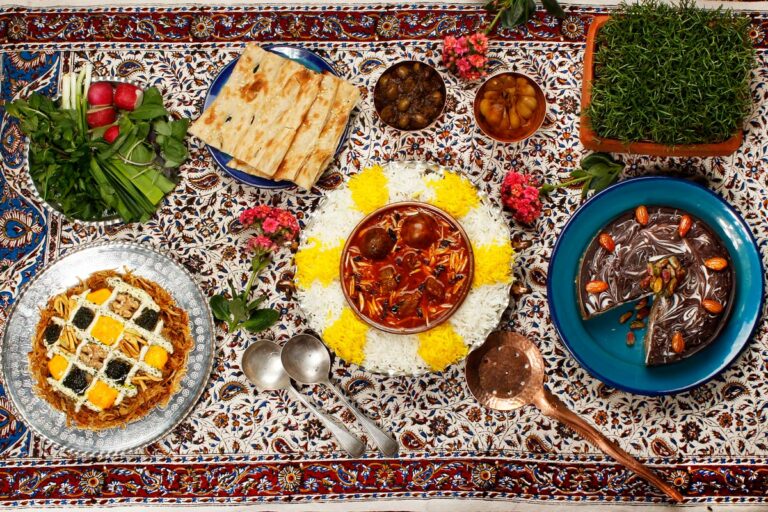Introduction to Iranian Cuisine
Iranian cuisine is a reflection of the country’s rich history and varied geography. Iranian food is known for its complex flavors, unique spices, and use of ingredients such as pomegranates, saffron, and rose water. The cuisine is characterized by a balance of sweet and sour flavors, and is often served with rice, herbs, and fresh vegetables. Iranian cuisine is also known for its hospitality and emphasis on communal dining.
History and Influences on Iranian Cuisine
Iranian cuisine has been influenced by a variety of cultures over the centuries, including Greek, Mongolian, Turkish, and Arab. The Persian Empire, which ruled much of the Middle East for centuries, also had a significant impact on Iranian cuisine. The Iranian culinary tradition has evolved over time, with regional variations and local specialties. Iranian cuisine has also been shaped by Islamic dietary laws, which prohibit the consumption of pork and alcohol. The cuisine has adapted to these restrictions, using lamb and beef as the primary sources of protein.
Popular Spices and Ingredients in Iranian Cuisine
Iranian cuisine is known for its use of unique spices, including saffron, cinnamon, cumin, and turmeric. Saffron, which is one of the most expensive spices in the world, is used in a variety of Iranian dishes, including rice dishes, stews, and desserts. Other popular ingredients include pistachios, almonds, pomegranates, and rose water. Herbs such as mint, parsley, and cilantro are also frequently used in Iranian cuisine.
Traditional Iranian Dishes
Some of the most popular traditional Iranian dishes include kebabs, stews, and rice dishes. Kebabs, which are made with beef, lamb, or chicken, are often marinated in yogurt and spices before being grilled. Stews, known as khoresh, are made with a variety of meats and vegetables, and are typically served with rice. Rice dishes, such as shirin polo and zereshk polo, are often flavored with saffron and served with dried fruits and nuts.
Contemporary Iranian Dishes
Contemporary Iranian cuisine incorporates modern cooking techniques and global ingredients while still remaining true to traditional Iranian flavors. One popular dish is fesenjan, which is a stew made with pomegranate molasses and walnuts. Another contemporary dish is tahdig, which is a crispy layer of rice that forms at the bottom of the pot during cooking and is often served with stews or kebabs.
Vegetarian and Vegan Options in Iranian Cuisine
Iranian cuisine offers a variety of vegetarian and vegan options, including stews made with beans, lentils, and vegetables, and rice dishes such as sabzi polo, which is made with herbs and served with fresh vegetables. Other vegetarian options include kuku sabzi, which is an herb and vegetable frittata, and ash-e reshteh, which is a thick soup made with herbs, beans, and noodles. Many Iranian dishes can also be modified to be vegan by omitting meat or dairy products.

